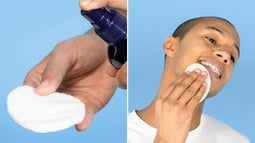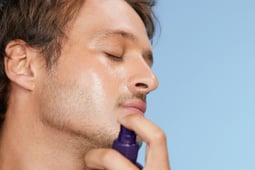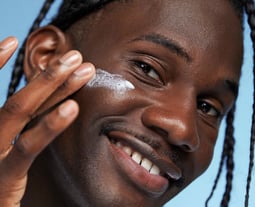

Skin pH, what’s it all about? You’ve probably been hearing a lot about it, it's all over your grooming products, and we instinctively tell ourselves that a product that respects our skin’s pH is better for our health. Read on to learn more about the obscure yet essential science of skin acidity.
Skin pH: definition
The initials pH stand for "potential of hydrogen" and are used to measure skin acidity on a scale of 0 to 14, with 7 being neutral. Below 7, the pH is acidic, above 7, it’s basic or alkaline. Our skin is covered with a protective hydrolipidic layer the average pH of which is around 4.7. This natural acidity is what enables the layer to eliminate bad bacteria that could irritate or infect the skin.
Your pH varies according to your age as well as your skin’s type and area
As with many other things, our skin is in perpetual evolution: it changes according to hormones, age but also the epidermal area. The skin on your legs is not the same as that of the armpits or the face. To guarantee an ideal environment for the natural microbiota (all the micro-organisms that help our body to function and defend itself), the skin's acidity must remain undisturbed. However, even the use of tap water (which is rather alkaline) will modify its chemical formula. pH that is too acidic destroys good bacteria and scours the skin, making it dry and irritated. On the other hand, pH that is too alkaline leads to skin that is often oily and does not defend itself well against infections.
What causes a pH imbalance?
Your diet, your grooming products, your sleep... your skin’s pH is dependent on your lifestyle. While pH can be measured in our blood, saliva or muscle tissue, it’s our skin that provides direct proof of a pH imbalance. For example, if you overindulge in products that are too acidic, such as dairy products, tobacco, alcohol, soft drinks or deli meats, you will alter your pH. In response, your skin will become more alkaline to fight off the acidity and will therefore become greasier with imperfections. Using grooming products that are too oily or too aggressive will lead to the same results.
Why you should choose grooming products with a neutral pH
The hydrolipidic layer that protects the skin is not infallible. Pollution and UV rays are the first external aggressors that modify its pH. This, in turn, leads to your skin becoming irritated, reddened or infected, and causes imperfections. Grooming products with a neutral (or physiological) pH will enable the hydrolipidic layer to maintain its balance and therefore avoid weakening a skin barrier which is already strained.
How can I restore my skin’s pH?
If your skin is already unbalanced, you’ll have to play chemist. Does it tighten and redden when rubbed? Use products with a pH close to 6. Is it greasy and shiny after a few hours? Choose products with a pH of 4.5 to 5 to balance it out. Finally, remember to moisturise your skin, whatever its type.
As with all things grooming, it’s important to remember to listen to our bodies. The skin’s pH is a reliable indicator of its health. Make sure you take it into account to choose the right products to take care of your skin.











